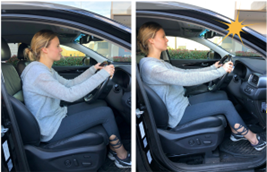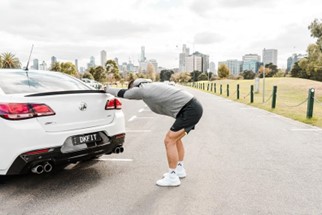Bony Fracture Healing
Bony Fracture Healing – The stages of healing

Experiencing a broken bone is among the most painful and challenging things one can endure. Despite your bones being strong and robust, like all tissues, there is a maximal load capacity that it can withstand.
Thus, a fracture occurs when a force exerted against a bone is stronger than the bone can bear. Although causes of fractures vary with age and activity, falling is a major cause of fracture in all age groups. This can happen through sport, accidents or activities of daily living.
Common sites of fractures are usually around the smaller bones including the collarbone, wrists and ankles.
Good news is that your bones have the capability of healing themselves gradually through stages. However, without proper management and understanding
of the condition, the healing bones that are reuniting will potentially be out of alignment causing pain and reduced function.

Even better news is that physiotherapists can help you speed up your recovery and ensure proper return to functional activities!
Healing a broken bone involves four stages, each crucial for getting the bone back to normal. Here’s a simple breakdown:
Inflammation (First Few Days): Right after a bone breaks, the body goes into repair mode. Blood clots form around the break, and your body starts sending in special cells to clean up any damaged tissue and fight off any potential infections. This stage might be a bit swollen and tender.

Soft Callus Formation (1-3 Weeks): The body starts building a soft, spongy, unorganized framework around the break. This is like a temporary bridge made of cartilage and collagen, which helps hold the bones together but isn’t very strong yet.

Hard Callus Formation (3-12 Weeks): The soft callus gradually turns into a hard, bony callus. This is where new bone cells come in and harden the temporary bridge into a more solid form. This stage is important for providing stability and strength to the healing bone.

Bone Remodelling (Several Months to Years): Over time, the new bone goes through a remodelling process. The body gradually reshapes and strengthens the bone to its original form. Old bone tissue is removed, and new, strong bone is laid down. The bone becomes more like it was before the break, though it may take some time to get back to full strength.
In summary, healing a bone is a step-by-step process where the body first stabilizes the break, then builds up new bone, and finally fine-tunes and strengthens it. Each stage is essential for ensuring the bone heals correctly and functions well in the long run.

All-in-all, bone takes generally up to 6 weeks to heal. Majority of people get back to their sport/activities within 10-16 weeks. Visit your nearest physiotherapist to find out more!



















 As we come to the busy festive season, many people set out for the long drive interstate to visit family. Just the thought of being cooped up in a car for hours on end might make you start to ache. After just returning from a driving trip to Sydney, Raine has some great ideas to help you arrive at the other in better shape, and hopefully not flare up your old neck and back issues.
As we come to the busy festive season, many people set out for the long drive interstate to visit family. Just the thought of being cooped up in a car for hours on end might make you start to ache. After just returning from a driving trip to Sydney, Raine has some great ideas to help you arrive at the other in better shape, and hopefully not flare up your old neck and back issues.
 We want to slip, slop, slap on long drives and even if it’s not sunny, the sun is still out. Don’t forget to stop and reapply, take a load off, have a coffee and do some exercises. It doesn’t have to be a whole routine, walking around the car park a few times is good and if you can do a fast walk, that’s great. Practice some squats or sit to stand off the bench, or some push-ups if you’re feeling up for it. Stretches are great and doing some twists for the lower back or some forward bends are essential, neck stretches can come in handy as well for those who get a sore neck after a while.
We want to slip, slop, slap on long drives and even if it’s not sunny, the sun is still out. Don’t forget to stop and reapply, take a load off, have a coffee and do some exercises. It doesn’t have to be a whole routine, walking around the car park a few times is good and if you can do a fast walk, that’s great. Practice some squats or sit to stand off the bench, or some push-ups if you’re feeling up for it. Stretches are great and doing some twists for the lower back or some forward bends are essential, neck stretches can come in handy as well for those who get a sore neck after a while. Dance is an art form that demands grace, precision and boundless creativity. Adolescent dancers, in particular, are at a critical stage of physical and artistic development. As they strive to achieve their full potential, it is essential to recognise the significant role that strength training plays in nurturing their talent. Beyond the aesthetics of dancing, comes the demands of physical strength. Strength training offers numerous benefits that can elevate a young dancer’s performance and ensure a sustainable and successful career.
Dance is an art form that demands grace, precision and boundless creativity. Adolescent dancers, in particular, are at a critical stage of physical and artistic development. As they strive to achieve their full potential, it is essential to recognise the significant role that strength training plays in nurturing their talent. Beyond the aesthetics of dancing, comes the demands of physical strength. Strength training offers numerous benefits that can elevate a young dancer’s performance and ensure a sustainable and successful career.

 Perhaps the most important question, how? The simple answer is strength training in whichever way the performer enjoys the most whether it be strength training at the gym, gym classes, a personalised program from a physiotherapist, barre or reformer Pilates. It can often be challenging to encourage even the most dedicated performer to comply with a strength training program but there is one way to always make it more fun, do it with friends, in a group class or a with a team- a way that makes it more social and enjoyable for everyone.
Perhaps the most important question, how? The simple answer is strength training in whichever way the performer enjoys the most whether it be strength training at the gym, gym classes, a personalised program from a physiotherapist, barre or reformer Pilates. It can often be challenging to encourage even the most dedicated performer to comply with a strength training program but there is one way to always make it more fun, do it with friends, in a group class or a with a team- a way that makes it more social and enjoyable for everyone. solid physical foundation, preventing injuries and enhancing flexibility are paramount. The fusion of strength and grace elevates their artistry, enabling them to become well-rounded, versatile and confident dancers. Dance is not just about movement; it’s a harmonious interplay of strength, and beauty that comes alive when nurtured with passion, determination, dedication and discipline.
solid physical foundation, preventing injuries and enhancing flexibility are paramount. The fusion of strength and grace elevates their artistry, enabling them to become well-rounded, versatile and confident dancers. Dance is not just about movement; it’s a harmonious interplay of strength, and beauty that comes alive when nurtured with passion, determination, dedication and discipline.